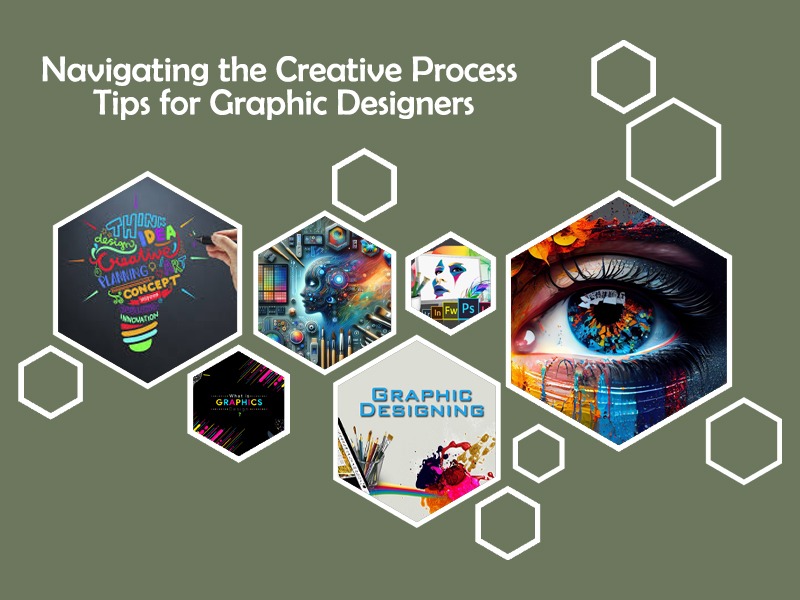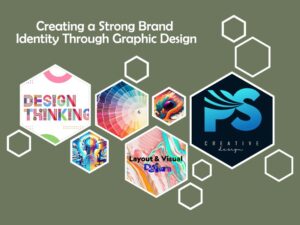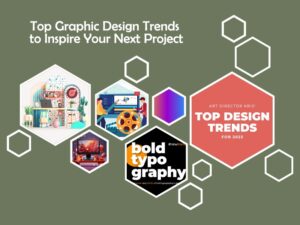Navigating the creative process: tips for graphic designers
Graphic design is a multidimensional field combining creativity with function. However the process of creativity can sometimes be puzzling and difficult, and working through this often proves to be challenging in the end. Working through this process can help improve your design in your design results, and here’s a simple guide with practical tips that will make graphic designers creative.
Understanding the Creative Process
Before diving into any tips on how to manage the creative process by graphics designers, understanding the various stages of it is first important. That is preparation, which enables you to gather information or define objectives; incubation, where ideas are simply allowed to simmer subconsciously; and illumination, the moment when concepts simply come together in a flash of inspiration.
Having defined these two stages, one proceeds to evaluation, which implies examining and revising ideas toward the alignment of the intended project, while the implementation stage is focused on the finalization and execution of the design. Knowing these stages can then help you identify the most likely problems and areas needing more work, thereby orienting your efforts for a more effective creative journey.
Begin with Research
Research is the core of a successful design project. Gather information about your client about their vision, goals, and preferences to know more about them. Interviews with clients will ensure that what you do regarding design goes in line with what they aspire for and how they feel about it.
You cannot create a graphic design that connects without knowing your audience. A competitive analysis helps discover the trends in your industry and will help you differentiate your work. This foundational research will shape the direction of your design and ensure that your output is relevant and effective.
Explain the Problem Clearly
After gathering your research, articulate the problem you are solving by creating a clear design brief. This document should outline the project goals, identify the target audience, convey key messages, and specify deliverables. A well-defined problem statement offers clarity and direction, helping you maintain focus throughout the graphic design process.
Brainstorm Ideas Freely
During the brainstorming stage, there should be creativity encouragement because, in the process, one would manage to come up with ideas without judgment. Techniques of mind mapping would help visualize concepts with their associated relationships. Quick sketching is valuable in that through it, ideas are portrayed visually before commitment to electronic form in case one wouldn’t remember initial thoughts.
Another highly effective activity is group brainstorming. Working with other graphic designers or stakeholders brings diverse perspectives, which can help in generating fresh ideas and innovative solutions. The primary objective of this phase is to generate as many ideas as possible, no matter how impractical they may seem at the time since you can refine them later.
Embrace Iteration
Iteration is an important step of the creative process because you can get back and revise your graphic designs multiple times. Feedback from peers and clients should also be part of the process of refining your ideas. Prototyping early allows you to test ideas using limited resources; in this case, you have identified the problems ahead of time.
Seeking constructive criticism calls for honest dialogue about one’s work, and growth and development are encouraged. Thus, this calls for openness to change, maintaining flexibility, and pivoting the approach depending on new insights gained during the design process. An iterative cycle may bring breakthroughs in quality and effectiveness unexpectedly in the designs.
Stay Inspired
Inspiration fuels creativity, therefore, it is important to connect with all sources of inspiration. Discover a sea of projects inspiring creativity using platforms like Bedance, Dribbble, and Pinterest. It allows insight into novel approaches and styles in the world of design.
This will also keep you updated on the current design trends, and you will know what resonates within the industry. Forums, workshops, and design challenges can further enrich your perspective by engaging with the creative community. Staying open to new ideas and experiences can help you cultivate a wellspring of inspiration that enhances your design work.
Creating a Productive Workspace
Your environment sets your creativity, therefore create a space that leads you to productivity. First, organize your space; one well-organized workspace would prevent many distractions, and you remain focused. This should even increase your ability in thoughtful and creative thinking about designs.
In addition to the above, inspirations from your space, such as artwork, quotes, or personal projects, can motivate and enhance creativity. Furthermore, by minimizing distractions, such as using noise-canceling headphones or applications that filter out distracting websites during your focused work session, you are better able to focus. Overall, a carefully designed space boosts both concentration and creativity.
Manage Your Time Effectively
Effective management, in terms of timing, can work well to make a workflow run smoothly. It must include time-blocking strategies in which you block off portions of time to allow for focused and efficient working time on projects. This makes managing the deadlines of all parts of a project a manageable feature to track and check whether everything is indeed being carried through accordingly.
The tasks also have to be prioritized; one needs to focus on the high-impact activities first, which would help deal with the critical elements of the project at an early stage. This would not only enhance productivity but also avoid burnout by creating a workable workflow. With such time management strategies, it will be possible to maintain a steady creative flow and be more effective in achieving the graphic design goals.
Use Technology Wisely
Leverage technology to streamline your creative process and enhance productivity. Be well-versed in the use of industry-standard design software like Adobe Creative Suite, Sketch, or Figma; equipped with strong features for successful creative visualization. It adds to efficiency and expands your creative prowess.
It will make you even more organized when organizing tasks with teams with the help of Trello, Asana, or Notion. Using pre-made stock resources from a website like Unsplashed, Shutterstock, or Envato Elements will give you perfect images and templates, further enhancing your designs. Hence, it saves time by using technology and increases the quality of work.
Be Adaptable
The graphic design landscape is dynamic and adaptive, and flexibility is important. Stay receptive to new trends, tools, and feedback. You can accept the change as an opportunity for growth and innovation. Refresh your skills regularly, open to learning new techniques or approaches that can improve work.
Thinking about Your Work
Take time to reflect on the process after completing a project. Reflect on what worked well, what you faced as challenges, and how you overcame them. This will help you learn from your experiences and apply those lessons to future projects. Keeping a graphic design journal can be very beneficial in documenting insights and personal growth over time.
Care for Other People
Learn something new and even more valuable through networking with fellow designers and professionals. Attend design meetups, conferences, or workshops to build relationships in the community. You can be sure that collaboration is going to inspire new ideas and improve your creative process.
Conclusion
Navigating the graphic design process requires research, inspiration, and proper time management. Understanding the phases of creativity, embracing iteration, and using technology are the secrets to bettering design outputs. Creating a productive space and being adaptive to changing industry needs contribute to overall success.
Never forget to reflect on your work and connect with fellow creatives for ongoing growth. These strategies will ultimately be targeted toward increasing your skills and leading to a fulfilling design journey that is innovative towards serving the client and audience for creating impacts that resonate in true designs.




